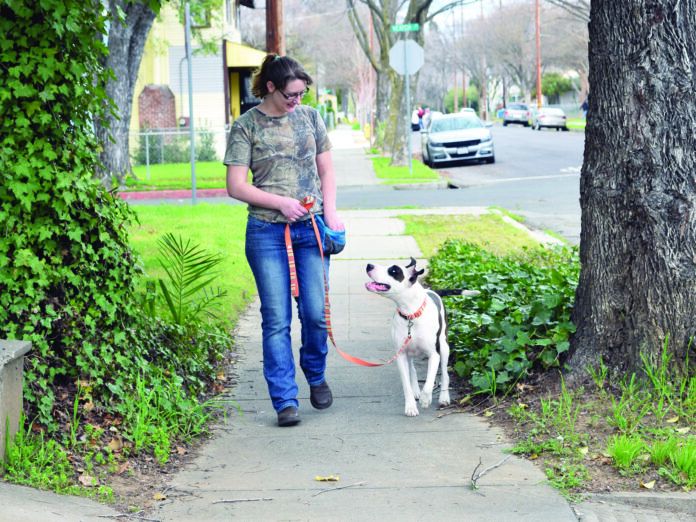If you want to teach your dog a new behavior, you must first “show” the dog what to do and make sure the behavior is reliable before adding a cue. For example, if I’m attempting to teach a dog to sit, I would help to elicit the behavior by first luring, capturing, or shaping the movement. Our dogs know how to sit, right? They just don’t know how to sit when we say “sit.”
To lure the dog into a sit, hold a piece of food in your hand, place it at the dog’s nose and move it up and back over the dog’s head. This causes the dog to look up, rock back a bit, and as she does so, her bottom goes down. When the dog’s bottom hits the floor, you’d mark the desired behavior with the click of a clicker (or a verbal marker, such as the word “Yes!”) and give the dog a yummy piece of food.
To capture a sit, merely wait patiently and observe the dog. When the dog happens to move into the sit position, click/treat.
To shape a sit, consider all the tiny parts of the entire sit position (looking up, rocking back, rear end begins to move closer to the floor), and reinforce each of those tiny parts toward the final behavior of sitting.
Once the dog is reliably (at least 80 to 90 percent of the time) performing the behavior, you can begin to incorporate whatever cue you wish by using your desired cue as the dog performs the behavior.
For more training tips, download The Recall: Teach Your Dog To Come When Called today.






